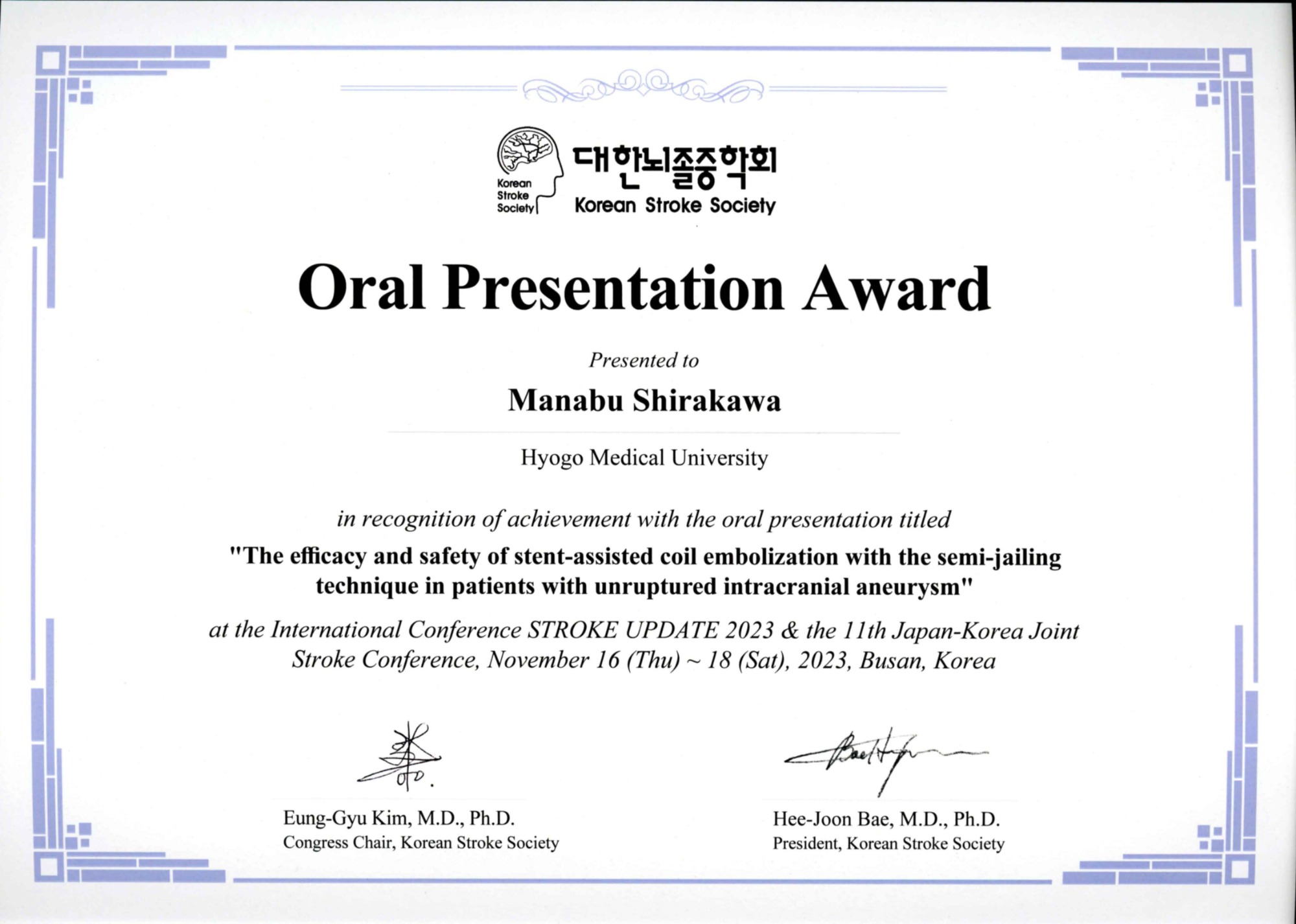Awards
Associate Professor Shirakawa Manabu Department of Neurosurgery receives Oral Presentation Award at the international conference STROKE UPDATE 2023
Associate Professor Department of Neurosurgery Manabu Shirakawa received the Oral Presentation Award for his oral presentation at the international conference STROKE UPDATE 2023 and the 11th Japan-Korea Joint Stroke Conference (Korean Stroke Society) held in Busan, South Korea in November last year.
Name of the awarding organization
The International coference STROKE UPDATE 2023 and the 11th Japan-Korea Joint Stroke Conference: Korean Stroke Society
Award Name
Oral Presentation Award
Award-winning Thesis
The efficacy and safety of stent-assisted coil embolization with semi-jailing technique in patients with unruptured intracranial aneurysm
Name of the winner
Associate Professor Department of Neurosurgery Shirakawa
Key points of this study
We investigated the usefulness of the semi-jailing technique, which compensates for the shortcomings of the jailing technique, a common method in Japan when using stents in unruptured cerebral aneurysms.
- Based on cases performed between 2013 and 2023, the semi-jailing technique was found to be significantly better in terms of the complete occlusion rate after one year and the rate of sufficient occlusion immediately after and one year after.
Research Overview
The use of stents in combination with unruptured cerebral aneurysms is expanding the scope of treatment. When using stents in combination, there are two methods: first, a microcatheter is inserted after the stent is fully deployed, and second, a microcatheter is inserted and the stent is deployed (jailing technique). In Japan, the latter is more common. However, the jailing technique also has drawbacks, such as the microcatheter being easily moved during coil insertion and the difficulty of reinserting it. To compensate for this drawback, a method is available in which a microcatheter is inserted first and the coil is inserted with the stent partially deployed (semi-jailing technique). However, there are few papers that have examined the usefulness of the semi-jailing technique, so we examined the usefulness of this method using our own case.
Research Methods and Results
We retrospectively reviewed 327 cases of coil embolization combined with stents performed at our hospital between 2013 and 2023. Patients were divided into a semi-jailing technique group (143 cases) and a conventional technique group (62 cases), and the complete occlusion rate at 1 year (primary outcome), the proportion of patients who were able to achieve sufficient embolization immediately after and 1 year after, and the proportion of patients with good outcomes (secondary outcomes) were compared between the two groups. The primary outcome was 77.6% in the semi-jailing technique group and 59.7% in the conventional technique group. The adjusted odds ratio was 2.32, which was significantly different, and the complete occlusion rate was higher in the semi-jailing technique group. The proportion of patients who were able to achieve sufficient embolization immediately after and 1 year after was also significantly better in the semi-jailing technique group (88.8% vs. 72.8%), with an adjusted odds ratio of 2.91. There was no significant difference in the proportion of patients with good outcomes between the two groups.
Future challenges
This study is a retrospective observational study and is limited by bias in the selection of surgical method, so verification will be conducted in a prospective registry study.

